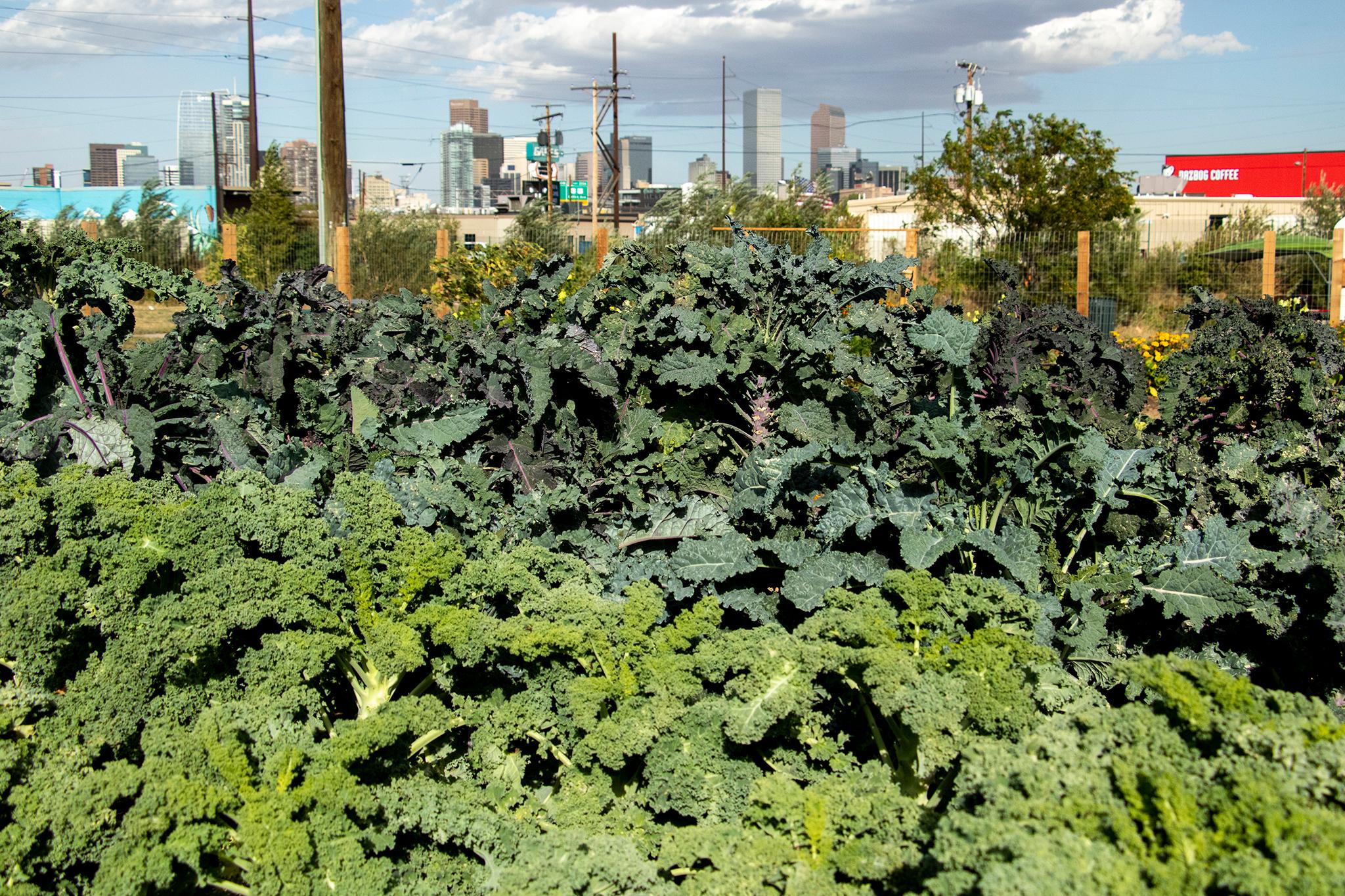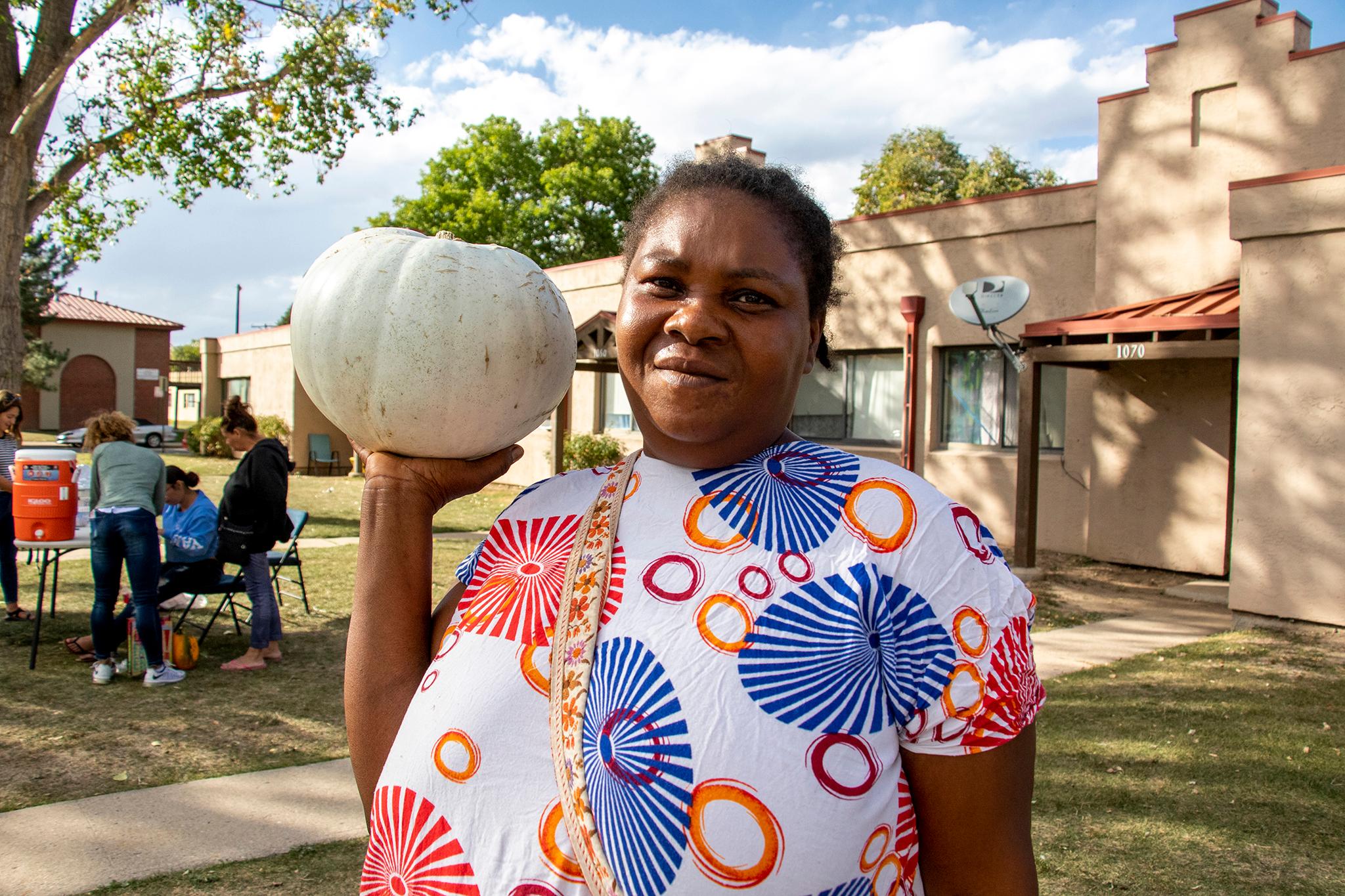A bush with a profusion of delicate, dark green leaves and yellow, red and eggplant-purple fruit drew Tra Nguyen's attention as she strolled among the raised beds at the Sun Valley Grow Garden.
"Oh, beautiful," she said.

Beautiful, but unfamiliar to Nguyen, a resident of the Denver Housing Authority's Sun Valley Homes, the oldest public housing in the city. Nguyen consulted with Alex Liethen, who works as a seasonal grower for Denver Botanic Gardens at the 10,000-square-foot Sun Valley garden. Liethen grabbed a handful of fruit from the hot Chinese five color pepper plant from the garden's produce stand, strategically located to serve DHA residents as well as members of the general public who who might be commuting along the South Platte River Trail between Eighth and 13th avenues.
The chiles, nestled in Liethen's palm like multicolored marbles, were available to all customers at the stand on a pay-what-you-can basis along with kale, collards, onions, squash, tomatillos and more.



The Sun Valley garden was first planted in May. By the end of September its harvest totaled more than 5,000 pounds of produce made available to DHA residents and others at the weekly farm stand and in other ways, including via the neighborhood food pantry. Sun Valley's is the newest Denver Housing Authority community garden, bringing the total to 14 at sites scattered around the city and supported by the botanic gardens and other partners, including Denver Urban Gardens.
Sun Valley's garden is a place for sharing knowledge and culture as well as food in a part of town where fresh produce is hard to come by and strains the budget for many.
The plot may also enhance resiliency in a community feeling the stress of change.
In a $240 million project expected to be completed in 2023, some 330 DHA homes built in Sun Valley in the 1950s will be razed to make way for about 750 new units of mixed-income housing. Most of the residents of the existing Sun Valley housing will be able to stay in their homes until new units are ready for them, which DHA and city officials hope will help guard against large-scale displacement in a neighborhood concerned about the impact of the gentrification that often accompanies new development.
The garden will move to a bigger plot and likely add greenhouses as part of the long-range Sun Valley project, said Shaina Burkett, a DHA community outreach specialist working in the neighborhood. Planning for the garden included interviews with DHA residents, who speak more than 30 languages at home, about what they hoped to see grown. Burkett said many residents were making their way to Aurora to shop at African, Middle Eastern and other specialty markets.
DHA encourages residents to help the staff in the garden. Burkett said the it's also a place to rest and reflect
Nguyen, a native of Vietnam who has lived at Sun Valley since 1991, said she tends the garden when she can, but that her job as a seamstress keeps her busy. She contributes in other ways. At a community harvest festival last week, Nguyen's homemade egg rolls stuffed with onions, carrots and other produce from the garden were offered alongside another neighbor's elote en vaso, a slightly spicy, slightly sweet Mexican corn salad.
Lynelle Murrell grew up in Sun Valley housing and still calls it home. Now 20, she works as a DHA youth liaison, a job that involves helping out at the farm stand, open through October on Fridays from 4 p.m. to 6 p.m.
Murrell, who has lived alone since her mother recently moved to market-rate housing, said being able to shop at the farm stand has helped her budget. She said it is likely even more important for larger families in the neighborhood. An average DHA household earns less than $12,000 a year, according to the housing authority.

Denver Botanic Gardens's Liethen said 80 percent or more of the Sun Valley produce is eaten by DHA residents. About half pay something at the stand.
"The other half are not in a position to," he said. "A lot of the bike commuters, whenever we explain what we're doing, they often give more than the suggested donation."
Last Friday, the suggested price for a bunch of kale or collards was $2. It was 50 cents for a football-sized zucchini.
The stand has cut down on drives to grocery stores. None are within walking distance of Sun Valley Homes, Murrell said.
But "there's a 7-Eleven up the hill," she added.

DHA's redevelopment plans include a 1,800-square-foot market at West 10th Avenue and Decatur Street that will stock groceries and basic goods, as well as fresh fruits and vegetables from the community garden and other organic producers. The market will also train and employ young DHA residents.
Murrell picks up ideas for preparing and preserving produce from neighbors she meets at the farm stand and from botanic gardens staff. Her eating habits have improved.
"It has taught me a lot about my health," she said. "I can see the difference in my hair and skin. I'm not weighing myself, but I can see the difference in my clothes. It's because I'm having healthy snacks."
She also sees camaraderie at the produce stand in a neighborhood where "you don't have a lot of positivity sometimes. People struggle."
"Everyone's happy coming here," she said of the garden and its produce stand. "I am so grateful and appreciative of the opportunity to have this."
Correction: The name of the garden and of the pepper plant that intrigued Nguyen were incorrect in the original version of this story.














